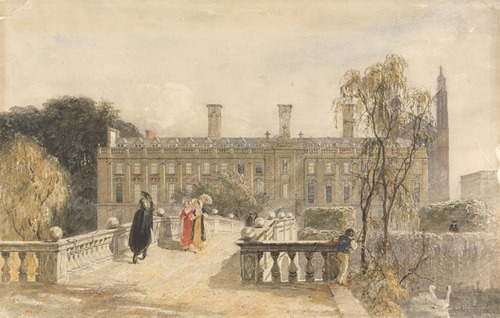George-Haydock Dodgson
George Haydock Dodgson was a successful and popular landscape painter and illustrator of the mid nineteenth century. He distinguished his work from that of his contemporaries through technical experimentation, being ‘one of the first water - colour painters to make full use ... of a wet method, dropping spots of pure colour ... on very damp paper, blending broken tints together and wiping out touches, in an attempt to obtain a suggestive effect and atmospheric values’ (Martin Hardie, Water-Colour Painting in Britain, III The Victorian Period, London: B T Batsford, 1971, page 160).
Considered as one of a group of ‘searchers after idealized truth’ (by an obituarist in The Art Journal in 1880), Dodgson produced a range of subjects from fêtes-champêtres and other scenes with figures in historic dress to English and Welsh topographical subjects, sometimes with an architectural emphasis. He so often included his favourite genus of tree, the Beech, in his paintings that a specimen at his sketching ground at Knole, in Kent, became known as Dodgson’s beech.
